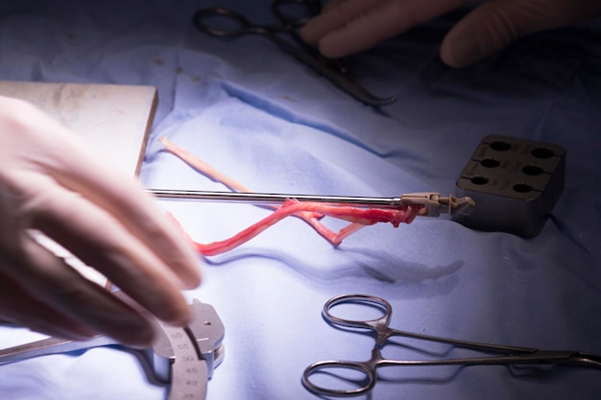Necrosis can be a daunting topic, particularly when surgery is involved. But don’t worry. We’re breaking down surgical methods for necrosis to make things easy. By understanding the steps involved, you’ll be better prepared to discuss concerns with your healthcare provider and choose the best path forward.
Necrosis Uncovered: The Basics
Necrosis is a condition where body tissue dies due to lack of blood flow. It can happen in any part of the body but is often seen in the skin. Common signs include a change in skin color, swelling, and pain at an affected area. The dead tissue can become discolored, often turning black.
Several factors can lead to necrosis. Traumatic injuries, like cuts or blunt impacts, can disrupt blood supply. Infections can cause tissue death, especially if not caught early. Conditions like diabetes, which affect the circulatory system, increase the risk. These factors highlight why necrosis can be challenging for so many people.
Spotting necrosis early is vital. Since it can lead to serious complications if untreated, noticing symptoms and acting quickly can prevent significant health issues. With early intervention, healthcare providers can better manage symptoms and potentially save affected tissues. Without prompt action, however, the risk of infection increases, along with the potential for more severe complications.
Why Surgical Intervention?
Ignoring necrosis is risky. Untreated, it can lead to severe infections that spread, causing sepsis or even limb loss. Serious, right? Here’s why surgical intervention for necrotizing infections can be crucial.
When surgery is necessary, the goal is to remove dead tissue. This process is called debridement. It’s essential because keeping dead tissue can harbor bacteria, increasing infection risks. More advanced surgical methods might be used depending on the necrosis severity. For example, someone with extensive necrosis might need a more thorough operation than someone with minor tissue involvement.
So why opt for surgery? Well, the advantages of surgery in treating necrosis are significant. Surgery effectively removes the problem tissue, stopping the spread of infection and facilitating healing. In many cases, surgery dramatically improves recovery chances, especially when done swiftly and by experienced professionals.
Navigating the Surgical Journey
Starting on a surgical path requires planning. First, the healthcare team assesses the situation. They look at the severity of necrosis and decide on the best course of action. Pre-surgery instructions are given, which might involve changes in diet or activity levels to prepare the body.
Surgery for necrosis has seen significant advancements. Latest surgical techniques for necrosis include the use of specific tools that improve precision, reducing damage to healthy tissues. With these new methods, the success rates of necrosis surgery are encouraging, reflecting better outcomes and lower complications.
Once surgery is over, a good recovery plan is crucial. Recovery time after necrosis surgery varies, but it usually includes wound care and lifestyle changes to avoid future issues. You might need to keep the area clean and dry and watch for infection signs. Gradually, as healing progresses, other activities can resume as allowed by the doctor.
Balancing Risks and Maximizing Recovery
Surgery always has risks. After necrosis surgery, there is a chance of complications like infection or delayed healing. Knowing these is key to management. Early intervention strategies can help manage such risks effectively.
Thanks to technological advances in surgical methods for necrosis, patient outcomes are better than ever. With newer technologies and detailed imaging, surgeons can operate with greater precision. This progress results in less invasive procedures and shorter recovery times, which is a win-win for patients.
Besides surgery, lifestyle choices matter. Healthy decisions can support recovery and minimize future risks. Eating a balanced diet, exercising moderately, and avoiding harmful habits like smoking can bolster healing. Sometimes, alternative treatments like proper wound care or physical therapy can complement surgical treatments, improving quality of life.
Understanding surgical methods for necro sis doesn’t have to be overwhelming. With insight into causes, procedures, and recovery, you’ll feel more confident discussing options with health professionals. Remember, early intervention and informed choices can make all the difference to recovery.



